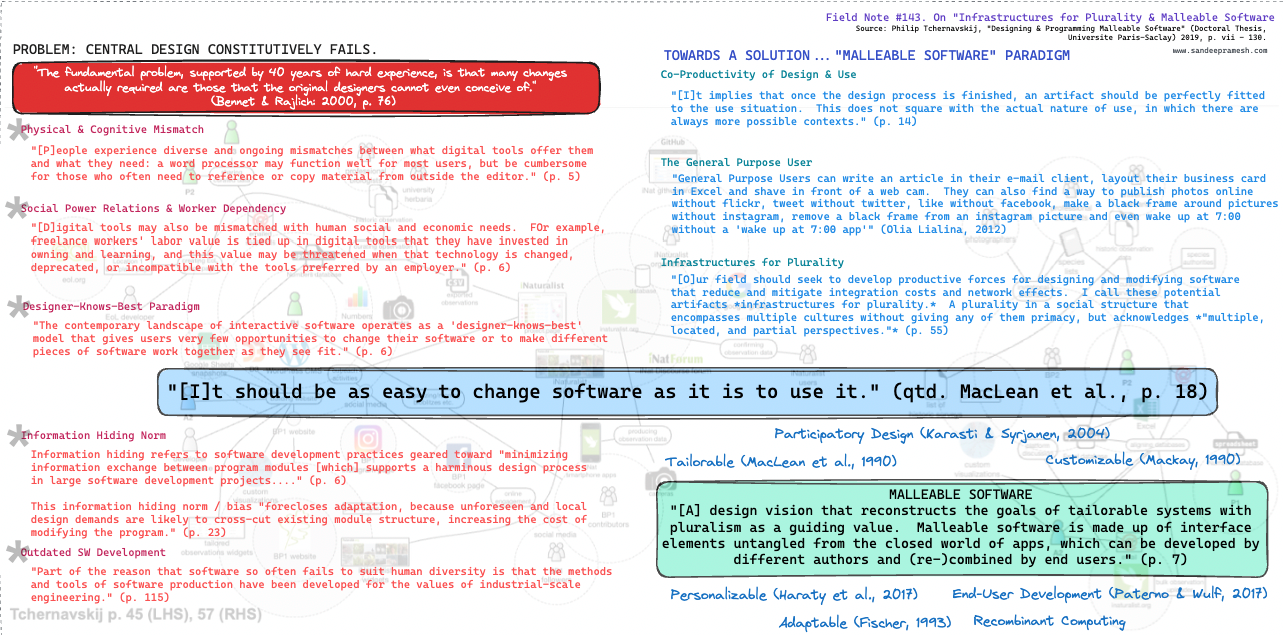Source: Philip Tchernavskij, "Designing & Programming Malleable Software" (Doctoral Thesis, Universite Paris-Saclay) 2019, p. vii - 130 (available online).
The Context.
A deft AI/ML entrepreneur with pro-social vision underpinned by a refreshing participatory anti-technocratic ethos kindly left me a breadcrumb pertaining to the evolution of software design. I picked up the breadcrumb and went looking for a loaf. I found one in Tchernavskij's 2019 doctoral thesis, titled "Designing & Programming Malleable Software."
The Motif.
"We live in an age of ubiquitous computing." (p. 5)
The background images to the appended Field Note Map (rendered in reduced opacity) show real software artifact ecosystems that are siloed and at best, "scotch-taped" together.
Against this background arises a call for "infrastructures of plurality" and development of "malleable software":
"the concept of interfaces that consist of interactive artifacts that may be freely pulled apart and (re-)combined as part of use, by contrast to the app ecosystems that define software today, in which each app defined an independent interfact that may only interact with the outside world through limited, prescribed means such as exchanging files." (p. 10)
Ultimately, what is refocused in this work is the vision espoused by MacLean at al. that "it should be as easy to change software as it is to use it." (qtd. MacLean et al., p. 18).
Provocative in its intuitiveness.
The Map.
